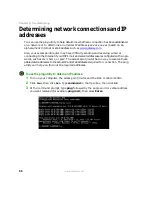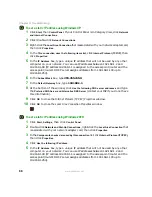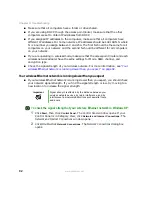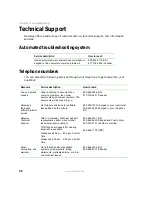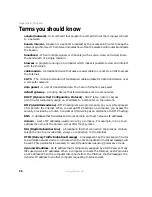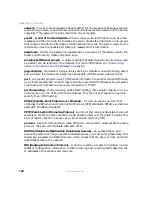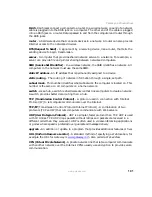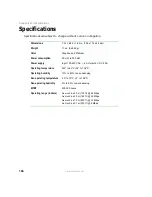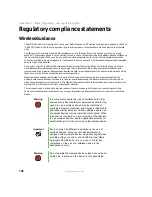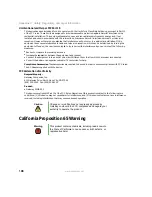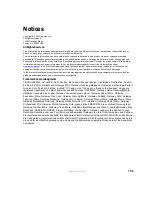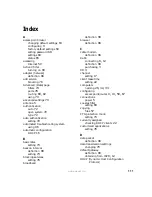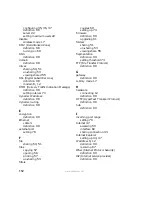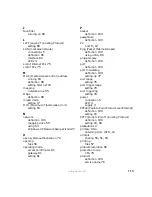
98
Appendix A: Glossary
www.gateway.com
Terms you should know
adapter (network)
- A circuit board that plugs into a computer to let the computer connect
to a network.
beacon interval
- A beacon is a periodic broadcast by the access point/router to keep the
network synchronized. The interval indicates how often the access point/router broadcasts
the beacon.
broadband
- When multiple signals or channels (such as voice, data, and video) share
the bandwidth of a single medium.
browser
- A program running on a computer which makes it possible to view and interact
with the Internet.
cable modem
- A broadband device that uses a coaxial cable to connect to an ISP to access
the Internet.
CAT 5
- The minimum standard of twisted-pair cable suitable for data transmission over
a computer network.
data packet
- A unit of transmitted data. For more information, see packet.
default gateway
- A routing device that forwards data over a local network.
DHCP (Dynamic Host Configuration Protocol)
- DHCP lets a router or access
point/router temporarily assign an IP address to a computer on the network.
DMZ (demilitarized zone) -
DMZ hosting lets a single computer on your LAN expose all
of its ports to the Internet. When you set up DMZ hosting on a computer, you bypass the
security provided by a router. Consider port forwarding as an alternative to DMZ hosting.
DNS
- A database that translates and stores domain and host names as IP addresses.
domain
- A set of IP addresses usually owned by a company.
For example, in an e-mail
address the name of the domain comes after the @ symbol.
DSL (Digital Subscriber Line)
- A broadband Internet connection that uses an ordinary
telephone line to provide a fast, always on connection to the Internet.
DTIM (Delivery Traffic Indication Message)
- A message sent by the access point/router
to a wireless network device to indicate when the next broadcast or multicast message will
be sent. This parameter is necessary to accommodate devices using power save mode.
dynamic IP address
- An IP address that is temporarily assigned by a DHCP server. Many
ISPs use dynamic IP addresses. When a computer connects the Internet, an ISP provides
an IP address. When the computer disconnects from the Internet, the ISP reassigns the
dynamic IP address to another computer requesting Internet access.
Summary of Contents for WGR-250
Page 1: ...User Guide Gateway Wireless G Access Point Router...
Page 2: ......
Page 5: ...iii www gateway com C Safety Regulatory and Legal Information 105 Index 111...
Page 6: ...iv www gateway com...
Page 13: ...Chapter 2 7 Setup for Typical Users Preparation Using the wizard...
Page 30: ...24 Chapter 3 Initial Setup for Advanced Users www gateway com...
Page 48: ...42 Chapter 4 Setting Up Windows Ethernet Networking www gateway com...
Page 64: ...58 Chapter 5 Using Your Network www gateway com...
Page 90: ...84 Chapter 7 Advanced Configuration and Settings www gateway com...
Page 103: ...Appendix A 97 Glossary...
Page 109: ...Appendix B 103 Specifications...
Page 111: ...Appendix C 105 Safety Regulatory and Legal Information...
Page 116: ...110 Appendix C Safety Regulatory and Legal Information www gateway com...
Page 122: ...116 www gateway com...
Page 123: ......
Page 124: ...MAN 802 11G ROUTER GDE R1 02 04...



